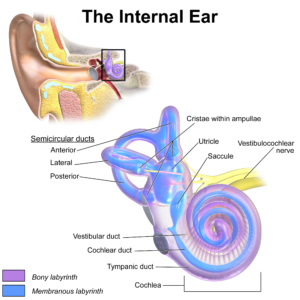 The rotator cuff is a group of muscles and tendons that join the arm bone to the shoulder bone and allows the shoulder to move and keeps it stable. Repetitive overhead motions can wear down the rotator cuff muscles and are thus a common cause of injury. It is quite common in sports like baseball and tennis, but the chances of these increase with age as well.
The rotator cuff is a group of muscles and tendons that join the arm bone to the shoulder bone and allows the shoulder to move and keeps it stable. Repetitive overhead motions can wear down the rotator cuff muscles and are thus a common cause of injury. It is quite common in sports like baseball and tennis, but the chances of these increase with age as well.
Injury to these tendons may result in:-
- Rotator cuff tendinitis, which is irritation and swelling of these tendons
- A rotator cuff tear, which occurs when one of the tendons is torn due to overuse or injury
These injuries often lead to pain, weakness and stiffness of the shoulder.
Guidelines to help recover from injury
Squareone Physio suggests that after a rotator cuff injury, one should follow the “RICE” methodology aid recovery-
- Rest
- Ice
- Compression
- Elevation
The combination of these help reduce the swelling and pain. Once the swelling has subsided and moving the arm is less painful, following exercises help in the healing process and help prevent “frozen shoulder” or range of motion loss.
Please Note: These exercises are for informational purpose only. If you are injured, please consult your physiotherapist before doing any of these exercises.
Doorway Stretch
- Warm up your muscles by standing in an open doorway and spreading your arms out to the side.
- Grip the sides of the doorway with each hand at or below shoulder height, and lean forward through the doorway until you feel a light stretch.
- Keep a straight back as you lean and shift your weight onto your toes. You should feel a stretch in the front of your shoulder. Do not overstretch.
Side-Lying external rotation
- Lie down on your side opposite to you injured arm
- Bend the elbow of your injured arm to 90 degrees and rest the elbow on your side. Your forearm should rest across your abdomen.
- Hold a light dumbbell and, keeping your elbow against your side, slowly raise the dumbbell toward the ceiling. Stop rotating your arm if you feel strain.
- Hold the dumbbell up for a few seconds before returning to the start position with your arm down.
- Repeat three sets of 10 up to three times a day. Increase reps to 20 when 10 becomes easy.
Reverse Fly
- Stand with your feet shoulder-width apart and your knees slightly bent. Keep your back straight and bend forward slightly at the waist.
- With a light weight in each hand, extend your arms and raise them away from your body (do not lock your elbow). Squeeze your shoulder blades together as you do so. Do not raise your arms above shoulder height.
- Return to start and repeat three sets of 10.
High-to-low rows
- Attach a resistance band to something sturdy at or above shoulder height. Be sure it is securely held so it doesn’t come lose when you pull on it.
- Get down on one knee so the knee opposite your injured arm is raised. Your body and lowered knee should be aligned. Rest your other hand on your raised knee.
- Holding the band securely with your arm outstretched, pull your elbow toward your body. Keep your back straight and squeeze your shoulder blades together and down as you pull. Your body should not move or twist with your arm.
- Return to start and repeat three sets of 10.
Lawnmower pull
- Stand with your feet shoulder-width apart. Place one end of a resistance band under the foot opposite your injured arm. Hold the other end with the injured arm, so the band goes diagonally across your body.
- Keeping your other hand on your hip, bend slightly at the waist (do not lock your knees) so the hand holding the band is parallel to the opposite knee.
- As if starting a lawn mower in slow motion, straighten upright while pulling your elbow across the body to your outside ribs. Keep your shoulders relaxed and squeeze your shoulder blades together as you stand.
- Repeat three sets of 10.
While these exercises help recover from a minor injury, we strongly recommend that you consult a doctor or a physiotherapist in case of a major shoulder injury as it needs more attention.
For more information on shoulder pain or other types of injuries and recovery steps, please subscribe to our newsletter. You can also follow us on social media for latest news and injury prevention techniques.

